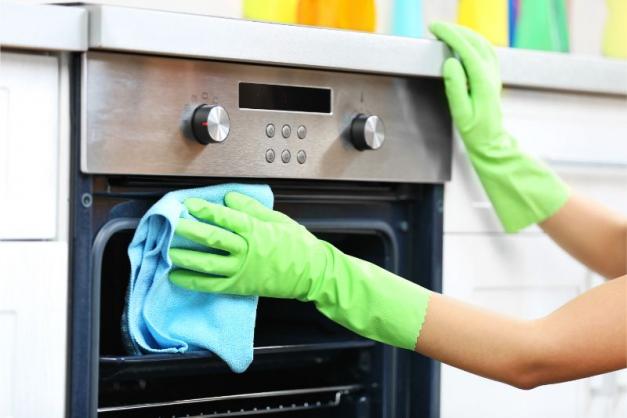
Stainless steel has made the move from commercial kitchens to the favored finish in many of today's sleekest residential kitchens (and in the laundry room, too). But in a busy household, spots, streaks and sticky fingerprints can quickly mar its lustrous look.
But aesthetics aren't the only reason to keep stainless steel clean. Although consumers think of stainless steel as a finish that will last a lifetime, that's not entirely true. Its hard, oxide coating protects the surface throughout the life of the product, provided that finish isn't removed through corrosion or wear. Any contamination of the surface by dirt, or other material, hinders its continual oxidation process and traps corrosive agents, ultimately destroying the metal's corrosion protection. Therefore, while cleaning – as long as you avoid abrasive cleaners – cannot wear out stainless steel, dirt and neglect can damage the steel. The American Cleaning Institute offers some suggestions for keeping stainless steel appliances bright and beautiful.
For general surface cleaning, wipe the surface with a cloth soaked in warm water. Towel-dry immediately to prevent spots caused by minerals in the water. If dirt remains, repeat, adding a mild dish detergent to the water. Rinse thoroughly before toweling dry. Always remember to check the label before using a cleanser to make sure it is safe for stainless steel.
- For stubborn fingerprints: Use a spray glass cleaner.
- For stains or scratches: Using a paper towel, apply a stainless steel cleaner. Read the directions on the label and test in an inconspicuous spot. Be sure to rinse thoroughly and towel dry.
- For cooked-on foods and grease: Use a nonabrasive cleaning powder or a paste of baking soda and water. Rub gently, using a sponge or nonabrasive pad. Rinse and towel-dry. Never use harsh abrasives or steel wool.
- To brighten a dull sink: Polish with a cloth dipped in white vinegar or ammonia.